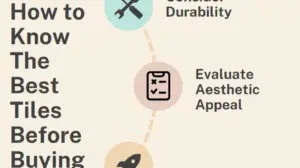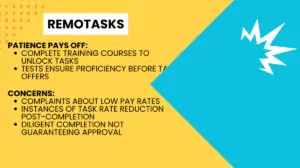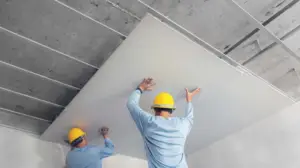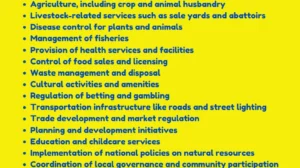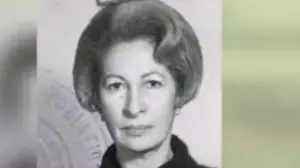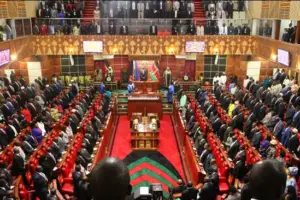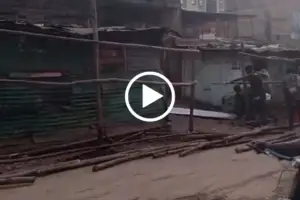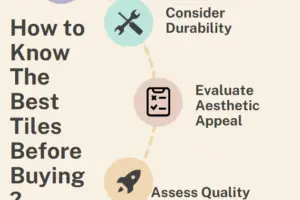
Monday 7th November 2022, Kakamega County Governor Fernandes Barasa appeared before the Ethics and Anti-Corruption Commission (EACC) to record a statement over the suspected fraudulent transactions said to have been paid to Lake Turkana Wind Power for a project in Marsabit.
We hope that this is a series of trips he will make to the EACC as he has a lot to explain, including but not limited to the plans to electrify the SGR amounting to Sh25 billion.
The former Kenya Electricity Transmission Company (Ketraco) boss must not run away this time.
There’s a time he literally run away, while not being chased, from ex DCI boss George Kinoti
In February, Barasa resigned abruptly, a day before, after he was summoned to appear before a parliamentary committee to answer audit queries at the electric transmission company.
Acting MD Wamukota could not explain why Barasa left the company before the end of his contract.
Barasa went on to run and win the Kakamega Gubernatorial seat in the AUgust 2022 General elections.
But what was his role in the looting of the Standard Gauge Railways (SGR)?
Part of the SGR contract
On section 13, appendix A of the Standard Gauge Railway (SGR) contract titled “Supply and installation of the facilities. Locomotives and stocks for the Mombasa – Nairobi Standard Gauge Railway Project”, the exorbitant cost of the white elephant project are laid bare. The appendix A is titled Non-Binding Bill of Quantities.
It is 44 pages of pure theft.
Below you will also read about what the media left in its report about the grass that costed Sh1 billion.
I will come back to Section 1, Appendix A later on, albeit briefly.
Kenyans should not forget that the equivalent of our SGR in neighboring countries, such as Ethiopia and Tanzania, were constructed at a lesser cost.
The over Sh400 billion that Kenya has borrowed and used in all the routes of the SGR (Mombasa – Nairobi – Naivasha etc) was enough to construct a dual lane electric train system.
Many people have forgotten that as the debate raged about a diesel vs electric trains, the ever PR-ready and greedy government went ahead and signed a $240 million (Sh24.4 billion) loan to electrify the SGR.
The move was a costly afterthought meant to rival Tanzania and Ethiopia’s SGR.
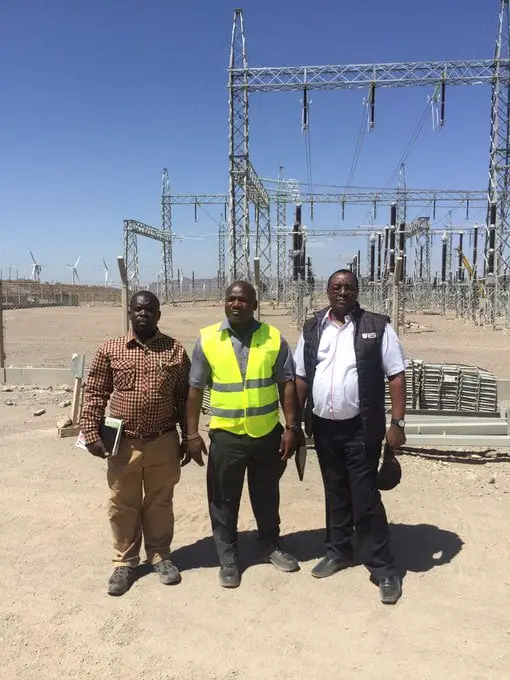
Ketraco and the Sh25 billion to electrify SGR
However, the blunder is that the money was channeled through an incompetent parastatal by the name Kenya Electricity Transmission Company Limited (Ketraco).
Fernandes Barasa-led parastatal had signed the contract with a Chinese-government owned multinational China Electric Power Equipment and Technology Company Limited (CET) two years ago and the works was supposed to begin.
What happened?
Mr Barasa wrote an opinion piece on a local daily saying that the project was viable but then Managing Director of Kenya Railways Corporation (KRC) Mr Atanas Maina had contradicted him stating that ‘the govt does not have the resources to transform the railway from diesel to electric’.
Ketraco on its part had stated that they will use the money to build 14 substations between the cities of Mombasa and Nairobi on a transmission line with a transfer capacity of “1,500 megawatts (MW) which is 200MW shy of the current national demand of 1,700MW”.
In all these, no one could explain how Ethiopia had built its 750 Kilometre-long SGR line at a cost of $3.4 billion (Sh346 billion), whereas Kenya’s 472-kilometre-long line had gobbled Sh447 billion.
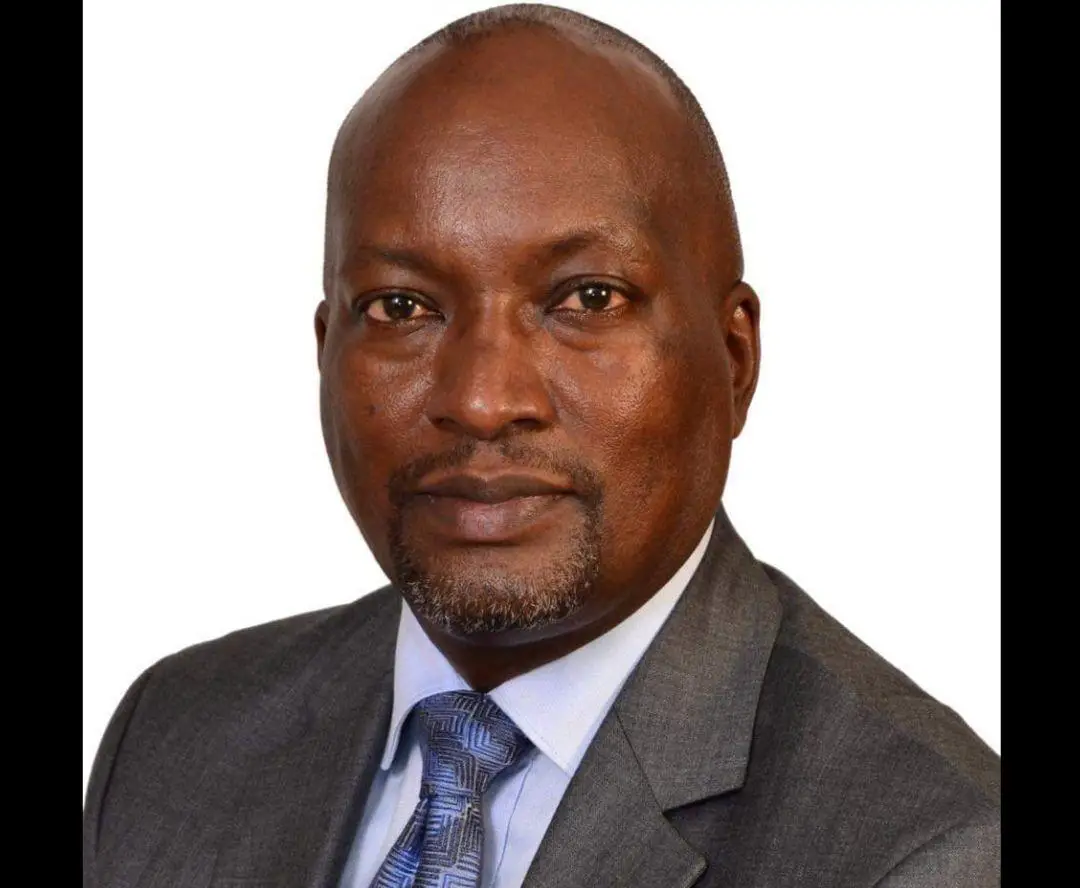
Afristar and the shady contract
The Africa Star Railways Operations Company Limited (Afristar) is the company tasked to run the SGR operations in Kenya. After a few years of slightly good service, it seems the Kenyan disease of collapsing firms is finally catching up with the Chinese contractor.
Afristar is a subsidiary of Chinese State-owned China Road and Bridge Corporation (CRBC).
On March 4th 2021, despite tussle over payments, Kenya Railways took over parts of the SGR operations. Since then vandalism of the main network in remote areas has become the norm with train delays hitting the roof.
It is perhaps shocking that a Kenyan by the name Sammy Gachuhi, who was blacklisted by The World Bank while still at the defunct Rift Valley Railways was appointed the Deputy General Manager at Afristar.
Afristar has also failed to command the well-being of its staff as cases of mistreatment has severally leaked in the media.
The looting
Though most people have forgotten that SGR is a white elephant whose construction coupled with other blunders and mismanagement by the Jubilee regime now threatens to cost us important installations such as the port of Mombasa, we would would like to keep the conversation alive.
Well, on Section 7, also titled Non-Binding Bill of Quantities, the first page shows the description of the entire page and their costing to be preliminary and supervisory/support services, site clearance and topsoil stripping, earthworks, protection work for railway and structure, culverts and drainage works, passage of traffic, temporary work and structure, bridge works, track laying work, and finally building of railway station, management office and subsidiary house.
The total cost of these is given as over Sh201 billion.
Generally, most of the Chinese employed to construct the SGR lived like kings, for example on provision of furnished houses for the employers (China Road and Bridge Corporation – CRBC) and senior staff, the taxpayer coughed up a whopping sh30 million.
We now share a picture of the rest of the page for you to do your own calculations.


In the second page on the continuation of preliminary and general supervisory/support services, Sh30 million has been set aside for the senior engineer to be ‘spent on’ an unspecified item ‘in whole or part.
It is in this section that we get to see that indeed the engineer’s office was given Sh3.6 million for ‘mobile and telephone charges’. To make matters worse, a temporary accommodation for the engineer was allocated Sh7.6 million.
How much is a simple event like a launch of SGR should cost? Answer, in this section, the contract shows that the budget was Sh20 million.
In the Earthworks section, the famous cost of the billon shilling grass emerges; the exact amount is actually Sh1,090,704,240.

The above section coupled with Section 13: Appendix A reveals the shocking theft that happened while constructing SGR. The claims of inflated costs are no longer claims as the earlier thought.
It is even imperative to remember that the African Union High Representative for Infrastructure Hon. Raila Odinga revealed in a TV interview that the coalition government under former President Mwai Kibaki and him had negotiated a lower cost that was revised upwards when UhuRuto came into power.
“Before we left government with Mwai Kibaki, we awarded SGR tender to a company at USD2.5billion. But when jubilee came in in 2013, they canceled the tender and awarded it back to the same company but at USD4.5billion. Obvious inflation of figures”-Raila Odinga, said in an interview in January 2020.
Environmental impact assessment and other blunders (old data)
The Environmental and Social Impact Assessment (ESIA) for the SGR project was carried it by a Kenyan firm Africa Waste and Environment Management Centre (AWEMAC); the worst part in the report is that only 217 people were interviewed as Key Informants for public participation.
The study was rushed and appears to be a formality on the part government of Kenya and their Chinese cronies. The project that had its cost revised upwards would go on and nothing could stop it.
China Road and Bridge Corporation (CRBC), the contractor, in a bid to hide crucial information from the public made the Kenyan government sign confidentiality clauses in the controversial contract making it “sensitive and private”.
By the end of this year 2020, Kenya is expected to have repaid at least Sh50 billion of the exorbitant Chinese loan.
The loan, whose interest is 3.6 percentage points above the six-month average of London Inter-Bank Offered Rate (Libor) which serves as an international benchmark, is to be repaid in 15 years with a grace period of five years.
“The railway has been sold as a commercially viable project, that is, it would pay for itself…I maintained that the railway could not pay, and that the debt would be paid from the public purse. This has now come to pass”. David Ndii repeated this statement that he made in 2014 in 2018 in a hard-hitting article titled, “SGR by the numbers: Some Unpleasant Arithmetic”- David Ndii, Managing Director for Africa Economics
The current one year Libor rate as of December 20, 2019 is two percent, a pointer that the loan comes with an interest rate of 5.6 percent.
This is expensive compared to other concessional loans, especially from the World Bank. Kenya recently agreed a Sh75 billion loan with the World Bank whose interest and other charges stand at two percent annually—matching the Libor rate.
Treasury data tabled in the National Assembly show that loan payments to Exim Bank of China will increase to Sh84.3 billion for the 2020/2021 and Sh111.4 billion in the 2021-22 financial years.
SGR accounts for the largest share of Exim Bank of China loans to Kenya including the Sh150 billion used to build the Nairobi-Naivasha line which has failed to attract business.
Slavery in perspective
In the documents shared by Mr Murkomen, China was to lend Kenya $1.6 billion (Sh190.77 billion at current exchange rates) at 2 percent interest per annum, with a 0.25 per cent commitment fee.
Taxpayers paid a management fee of $4 million (Sh476 million) 30 days after the signing of the contract.
The SGR deal, the contract shows, is a 20-year loan with a seven-year grace period. Kenya was to repay the amount in 156 months (13 years), and was to dedicate 42.06 per cent of the proceeds from the railway to repay the loan.
For the Nairobi -Naivasha route, Kenya inked a 1.2bn USD (Sh143 billion in the current exchange rate) in a 20-year loan facility.
Kenya was required to pay 137.59 million USD as insurance fees.
The contract also confirms fears that Kenya had been bound to seek resolution—in case of a dispute—only in China, which experts have said gives the Asian nation a big advantage.
“If no settlement is reached through friendly consultation, each party shall have a right to submit a dispute to the China International Economic and Trade Arbitration Committee for arbitration …” the contract states.
In the deal, Kenya was bound to establish an inland container depot in Nairobi “and its mandatory customs clearance” as well as a Railway Development Fund, that China had said should be established “to be applied in priority to make repayment of loans in relation to the project”.
The contract also demanded that Kenya first approaches China to purchase any goods from the proceeds of SGR, before going to any other market.
XXX
The previous government forced truckers out of jobs in order to make arm-twist businessmen to use the SGR.
The issues surrounding the Inland Container Depot (ICD) in Nairobi, which we now know was part of the deal (through the parts shared by Murkomen) escalated forcing the Ministry of Transport to order all cargo going to Western Kenya and the region must be offloaded at the newly built Naivasha ICD.
Naivasha ICD was a state capture project, totally oblivious of the facts, not good economically and bad for the welfare of the the country’s third city of Mombasa
Even now it seems highly unlikely that SGR which runs at a cost of over Sh1 billion per month is going to break even, despite any manoeuvres.
But President William Ruto can move with speed and cut the importation of foreigners to jobs Kenyans can comfortably do. This will help save some operational costs because research shows that even as SGR made losses in the previous years, its costs of operations continued to rise.
CRBC has also been accused of importing foreigners who are paid exorbitantly than Kenyans on an already strained train service.
According to the Enviromental and Social Impact Assessment (ESIA) report, more than 50,000 truck drivers and turnboys lost their jobs; Mombasa turned into a ghost town, thanks to the job losses.
Finally, even as the new regime centers itself in power to chart its policies, questions about the money borrowed to finance the electrification of SGR linger because, a few years after the loan signing, Ketraco under Fernandes Barasa, was caught up in a scandal that Sh14.2 billion is said to have been lost through fraudulent payments to landowners.



